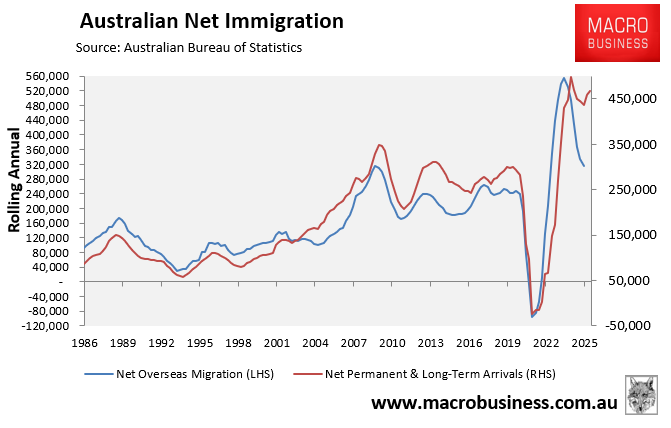Australia has the second-largest concentration of international students in the world, behind the tiny nation of Luxembourg.
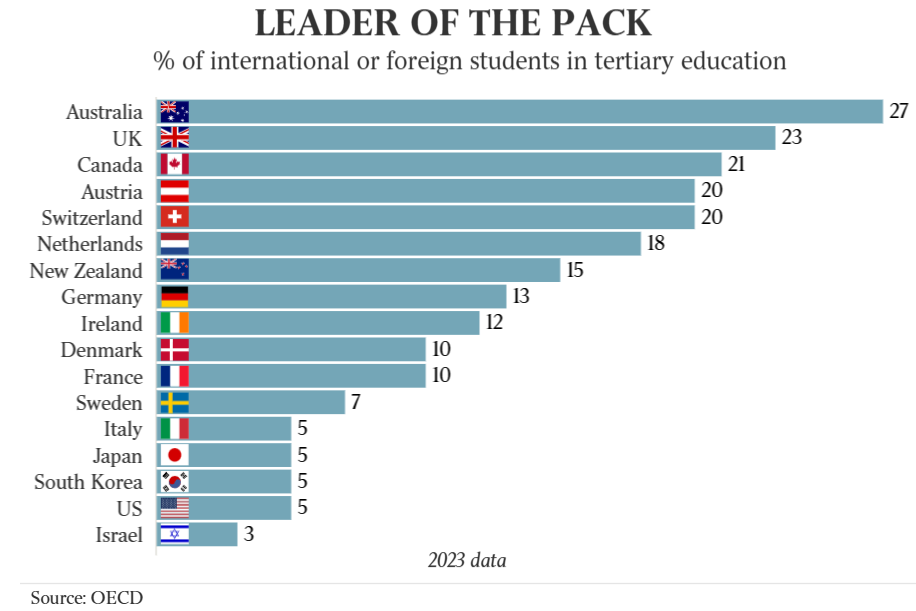
Temporary visa data from the Department of Home Affairs shows that student and graduate visa holders comprised 3% of Australia’s population—almost one in 30 people—in the June quarter of 2025. This was up from 2.6% at the pre-pandemic peak and double the 1.5% share in 2012.
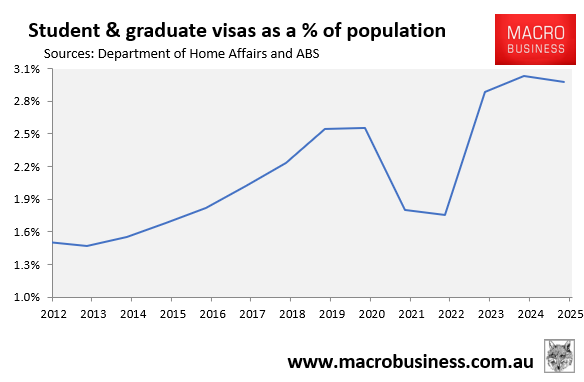
The latest study on the international education sector by Jobs & Skills Australia (JSA), released in September, openly acknowledged that the majority of international students come to Australia to work and live, rather than for educational purposes.
Nearly 70% of international higher education students reported migration as a reason for choosing to study in Australia, JSA reported.
“For many students, migration aspirations are a primary goal”, JSA wrote. “The purpose underlying the choices of many students was to seek permanent residence in Australia”.
JSA noted that over 90% of Indian and nearly 96% of Nepali higher education students cited the ability to work while studying as one of the reasons they chose Australia. “80% of students from South and Central Asia (including India and Nepal) were working during study”, JSA said.
JSA found that about half the overseas students who attended Australian universities in the early 2010s are permanent residents:
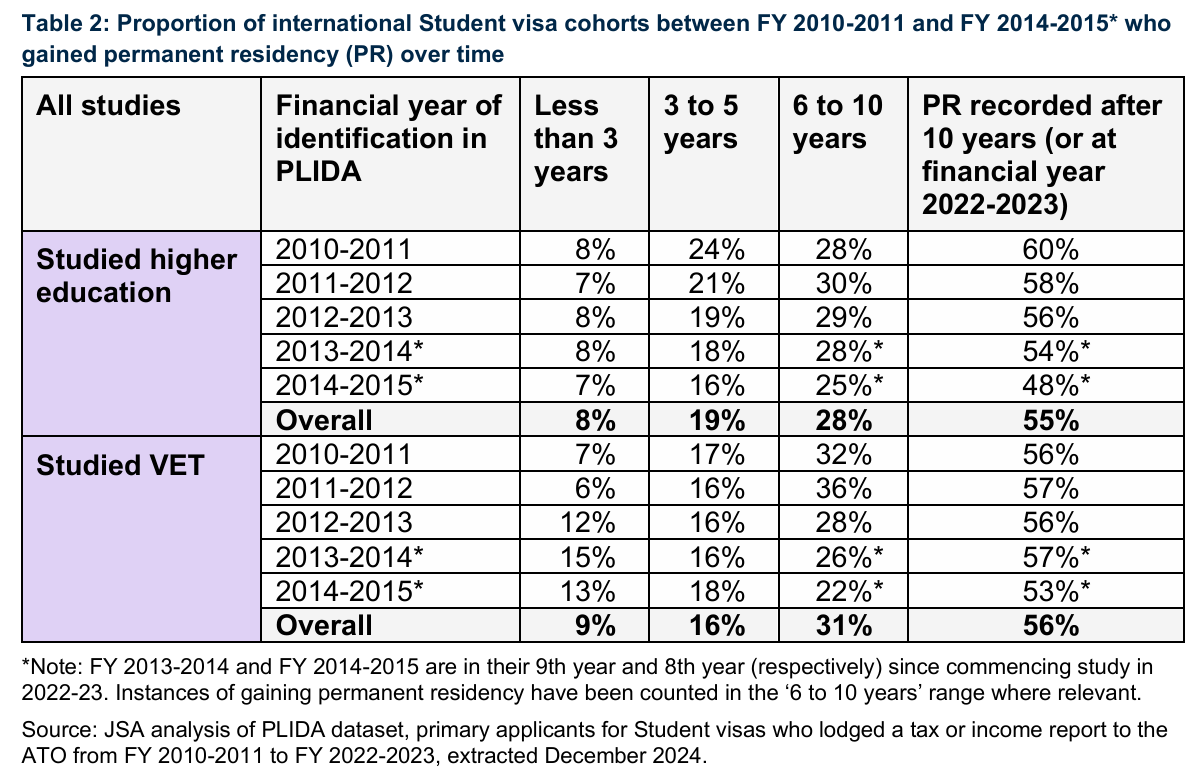
JSA confirmed that international graduates earn significantly less than domestic graduates and work in lower skilled jobs:
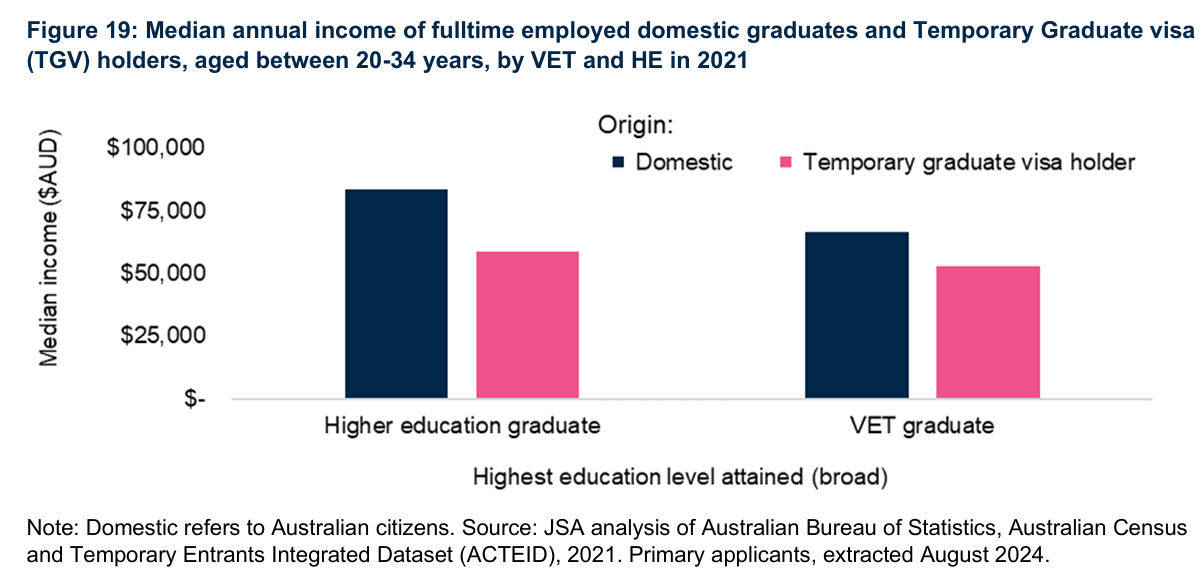
“International graduates remaining in Australia after their study are less likely to secure employment in their field and at their qualification level and earn less than domestic counterparts”, JSA wrote. “These effects are more exaggerated for higher education graduates than VET graduates”.
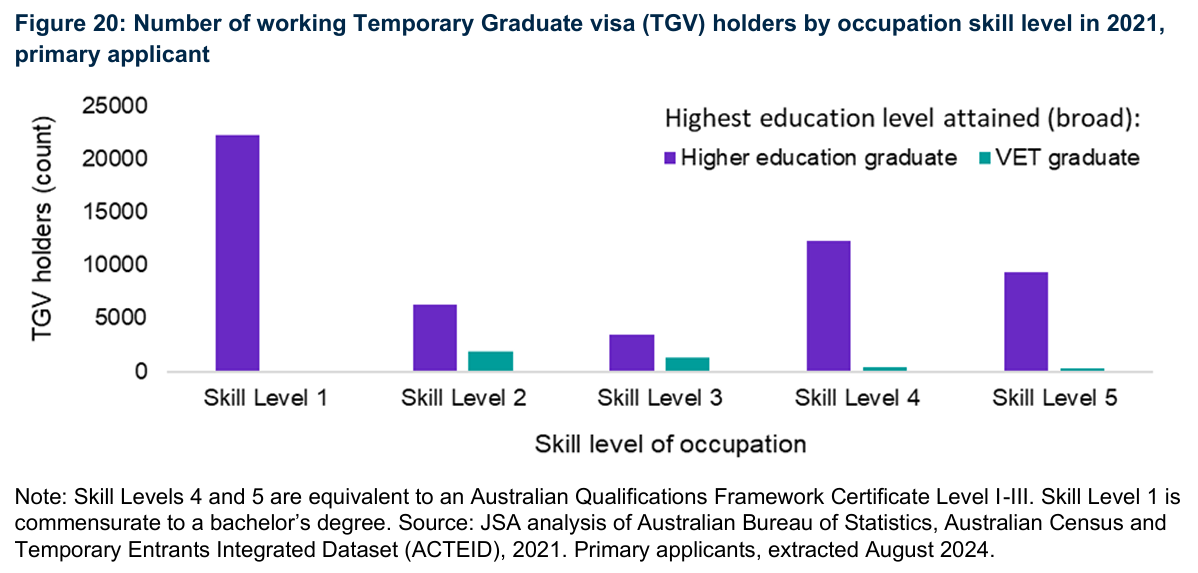
“Many higher education graduates remain employed in sectors that may have minimal long term benefit to employability in their field of qualification (e.g. Retail Trade). While Accountants and Registered Nurses are the most common occupation for Temporary Graduate visa holders, some of the most common jobs held by these graduates are at Skill Level 3, 4 or 5”.
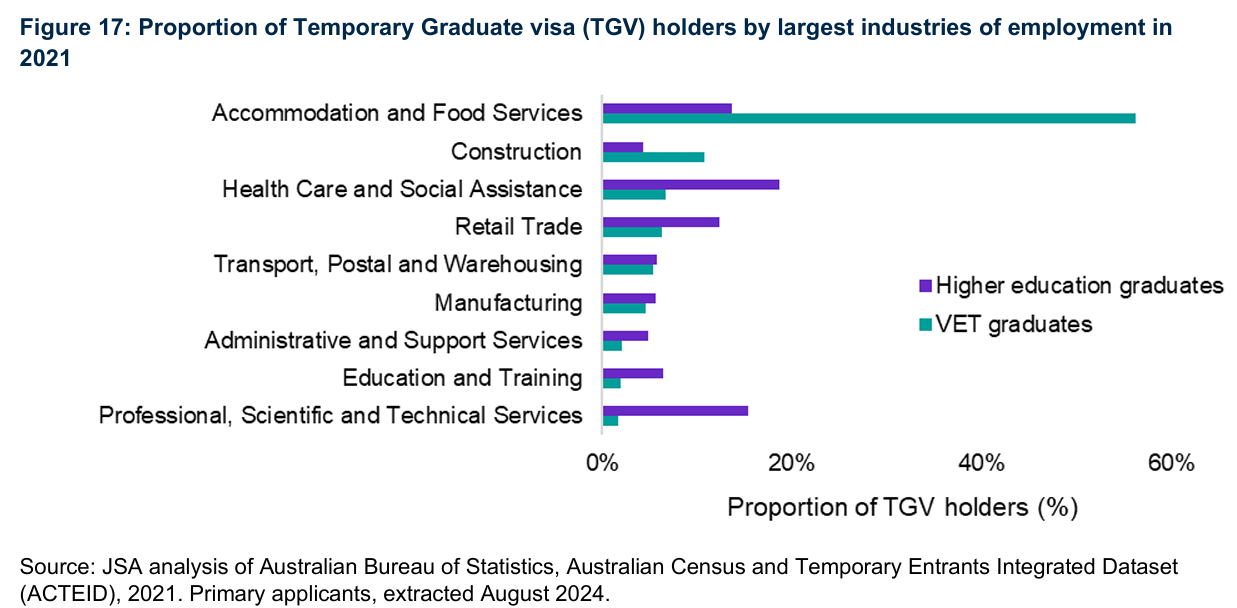
“A Department of Education analysis in 2022 found growing numbers of higher education graduates were employed in occupations such as sales assistants and call centre operators in line with growth in Temporary Graduate visas granted (Figure 18)”.
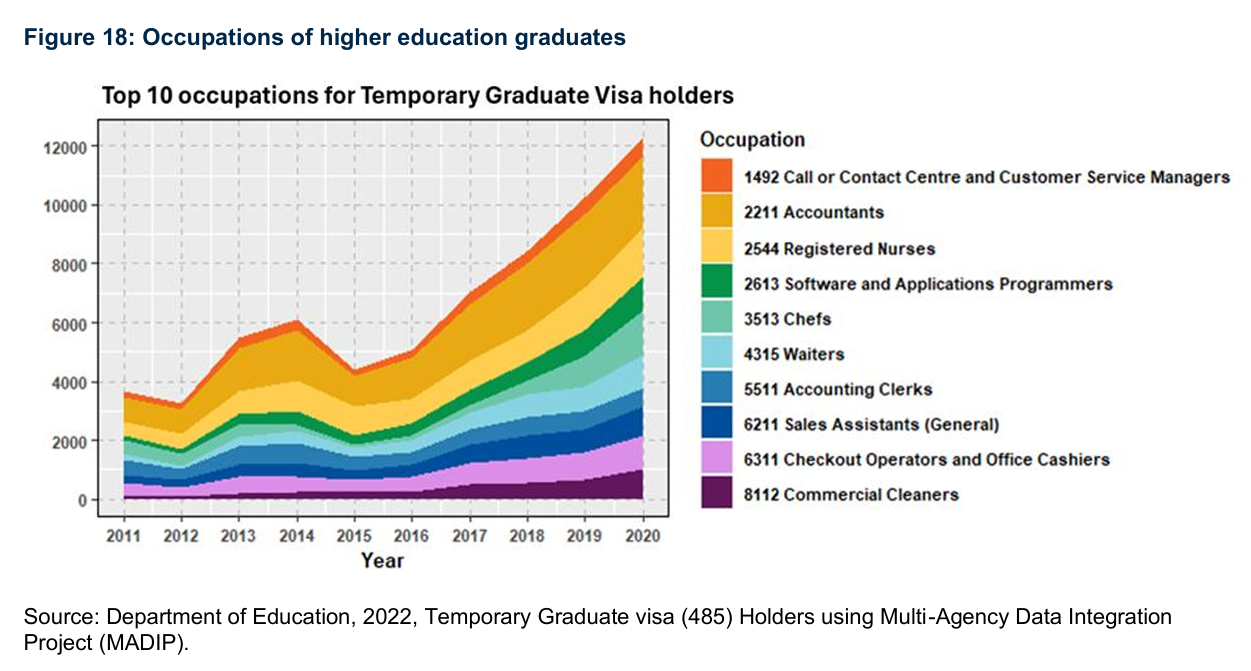
JSA shows that international graduates who studied the most popular university degree of business and management earned roughly half as much as domestic graduates with the same qualification—$56,900 compared to $115,000 for local graduates.
For engineering and computing graduates, foreigners earned $60,000 compared to $100,000 for domestic graduates—a sign they had found jobs in different fields.
JSA also noted that the financial requirements to gain a student visa are easily circumvented. It also noted that many international students sent money home to their families in remittances.
Overall, JSA’s report proved that international education is a migration scam that is flooding the nation with low-skilled, lower-productivity workers.
Last week I reported that the Albanese government has eased entry requirements for Indian students, which are Australia’s second largest source for international students.
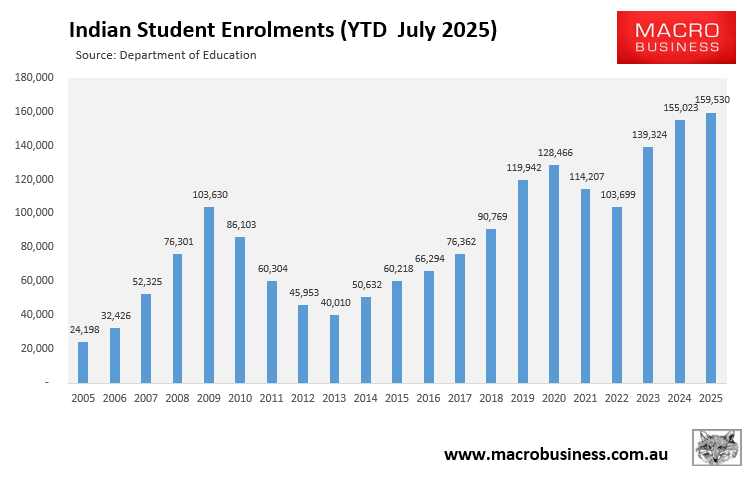
“Key changes include reduced upfront financial evidence and course-dependent English test requirements. Gold Coast–based registered migration agent Seema Chauhan told The Australia Today that this is a positive update for Indian international students seeking high-quality education opportunities in Australia”.
“With India now at Level 2 alongside countries like Bhutan, Vietnam, China, and Nepal, students and families can expect smoother admissions, fewer delays, and greater confidence in pursuing an Australian education”, The Australia Today reported.
Earlier this year, the Albanese government lifted its planning level for international students by 25,000 for 2026 to 295,000.
A new Department of Education Fact Sheet reveals that all universities have received a higher education allocation in 2026 of at least their 2025 allocation, as illustrated in the below table:
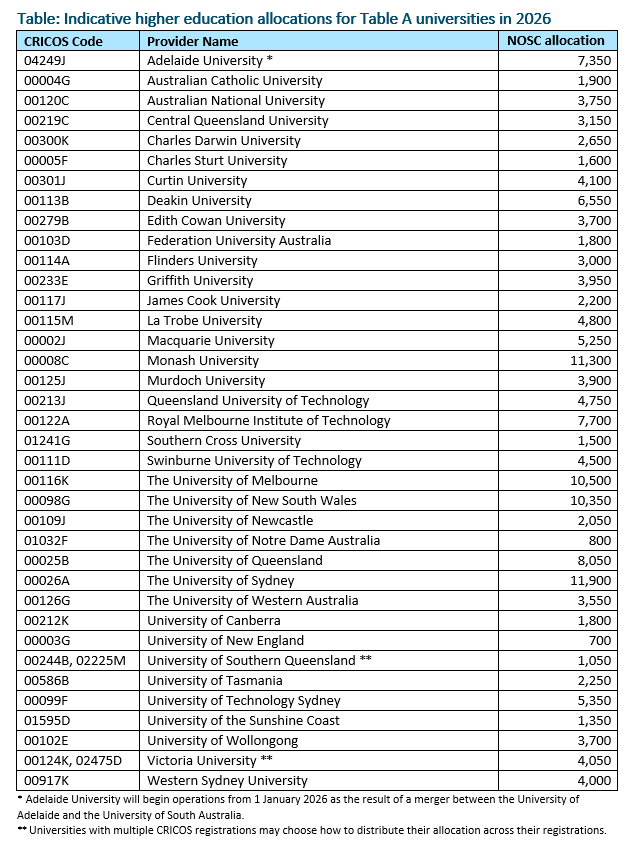
Clearly, vested interests have corrupted higher education in Australia. Otherwise, why would the federal government be lifting numbers further when JSA basically acknowledged that international education in a gian immigration ponzi scheme?
Rather than continually lowering standards to lure more international students of doubtful quality to Australia, policymakers should aim to recruit a significantly smaller pool of excellent (genuine) students.
The government should instead force the international education sector to aim for quality over quantity via the following types of reforms:
- Significantly raise English-language standards and mandate entrance examinations for prospective students to study in Australia.
- Significantly increase financial requirements, mandating the payment of funds into an escrow account prior to arrival in Australia.
- Reduce the number of hours that international students are allowed to work and sever the direct link between study, work, and permanent residency.
- Only allow top-of-class graduates to receive graduate visas.
- Because Australian universities are non-profit enterprises that do not pay taxes, the government should impose a levy on international students to ensure that Australians receive a financial return from the trade.
Sadly, the Albanese government has no genuine intention of lowering immigration, which is why numbers remain at unprecedented levels above anything Australia experienced before mid-2022.
